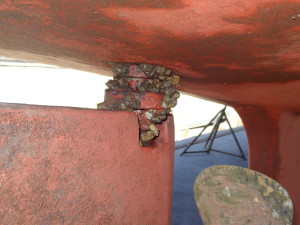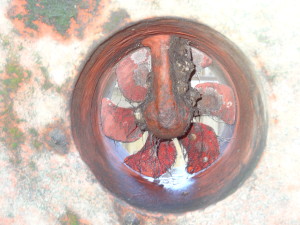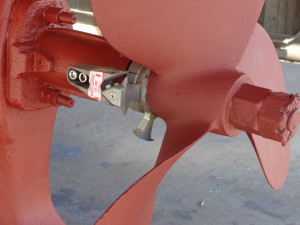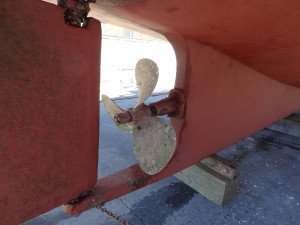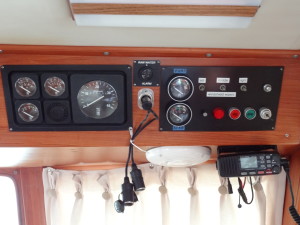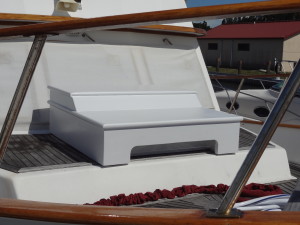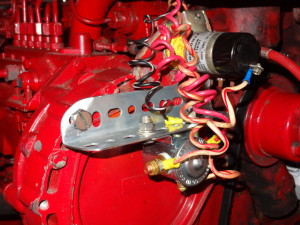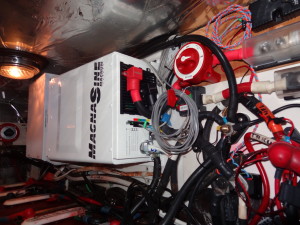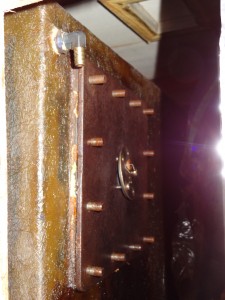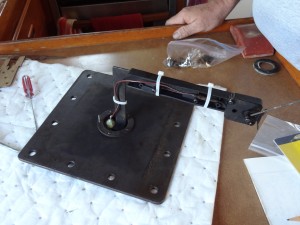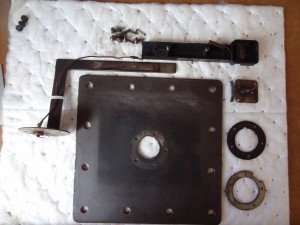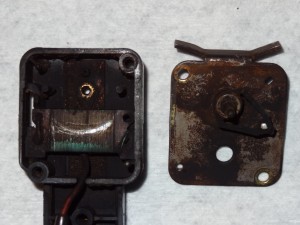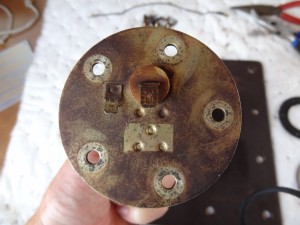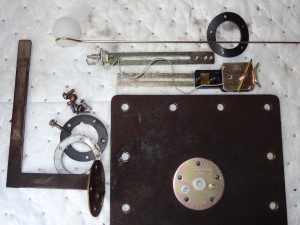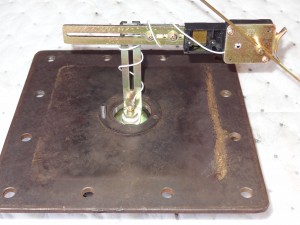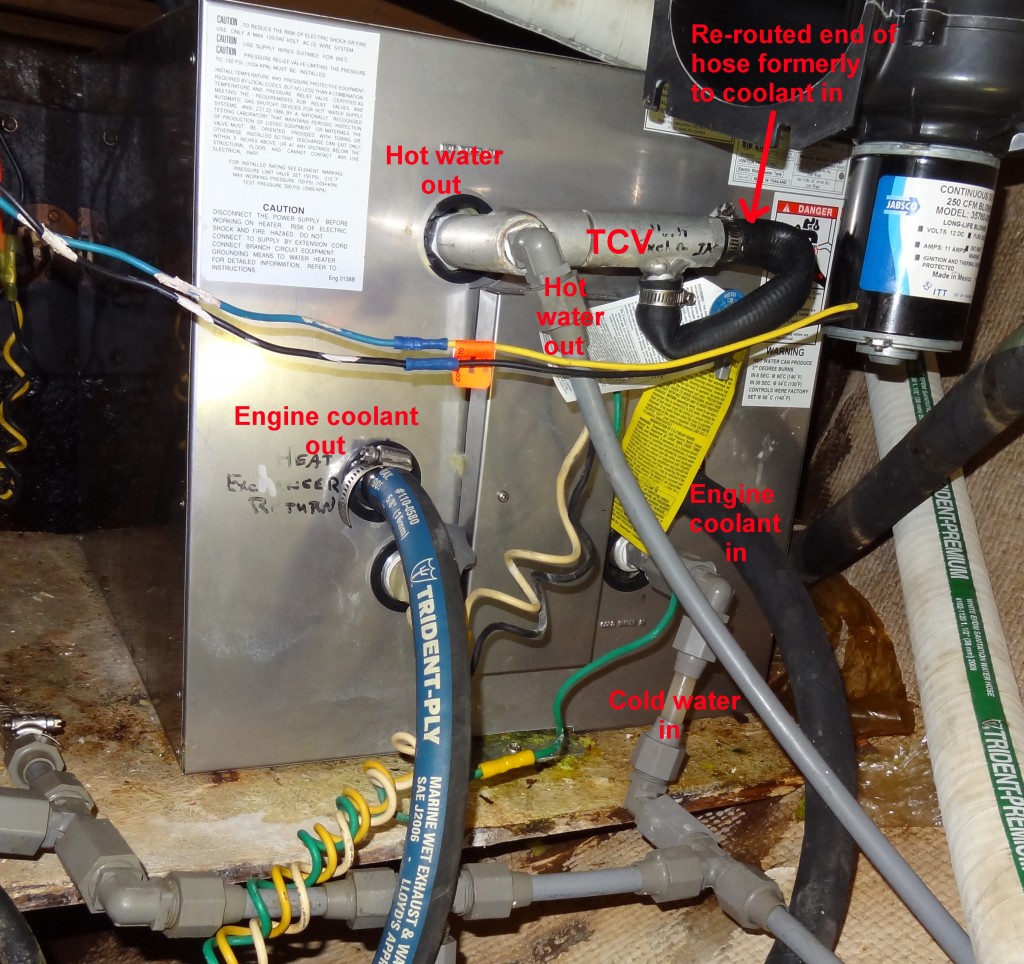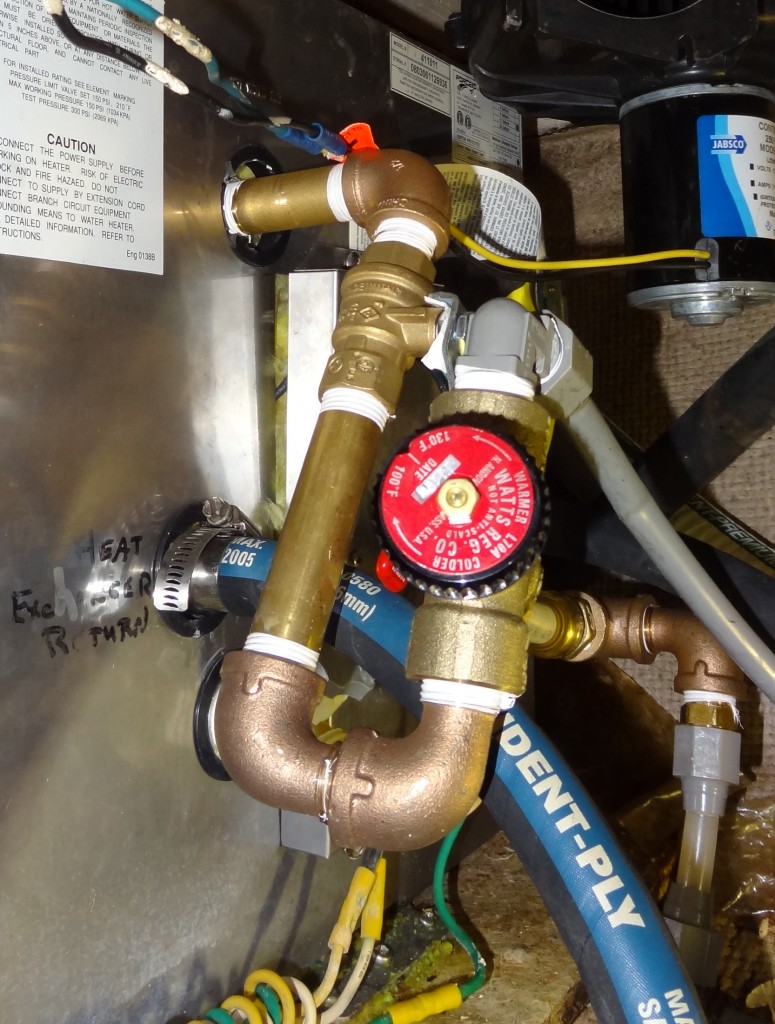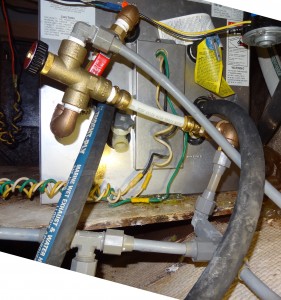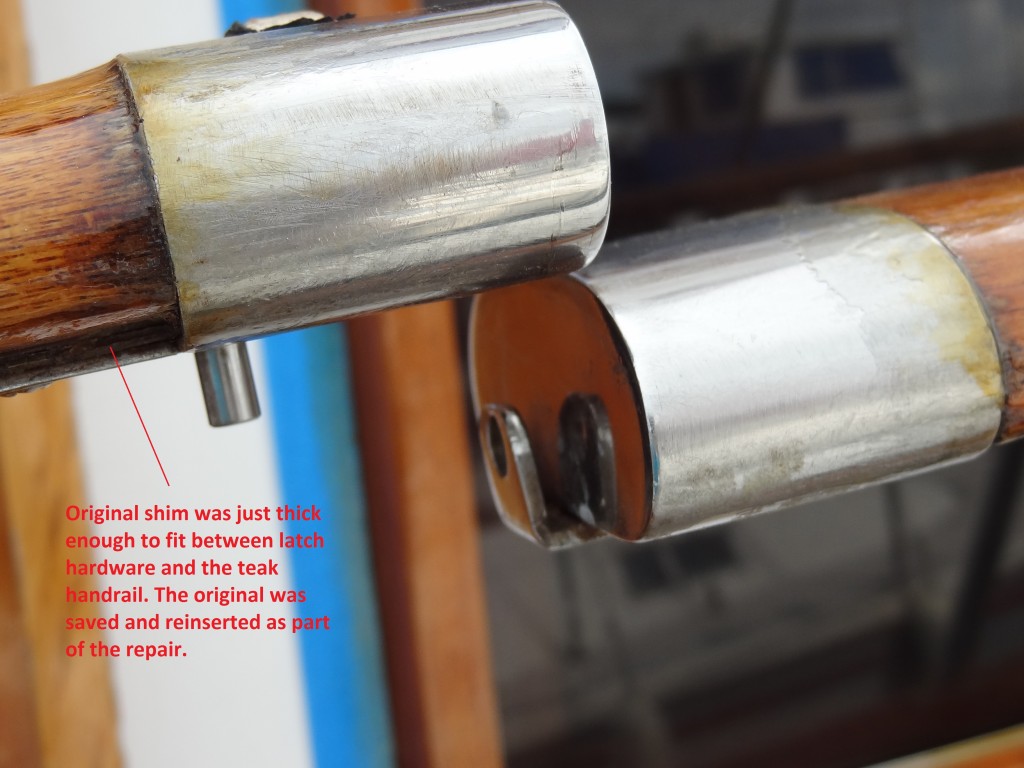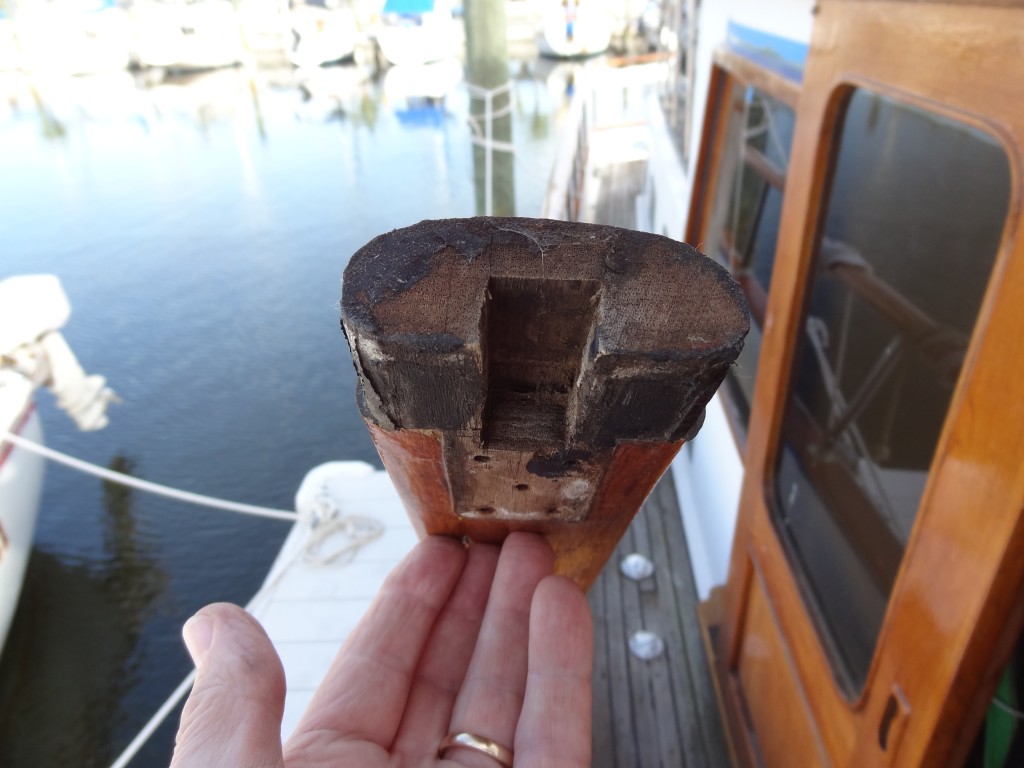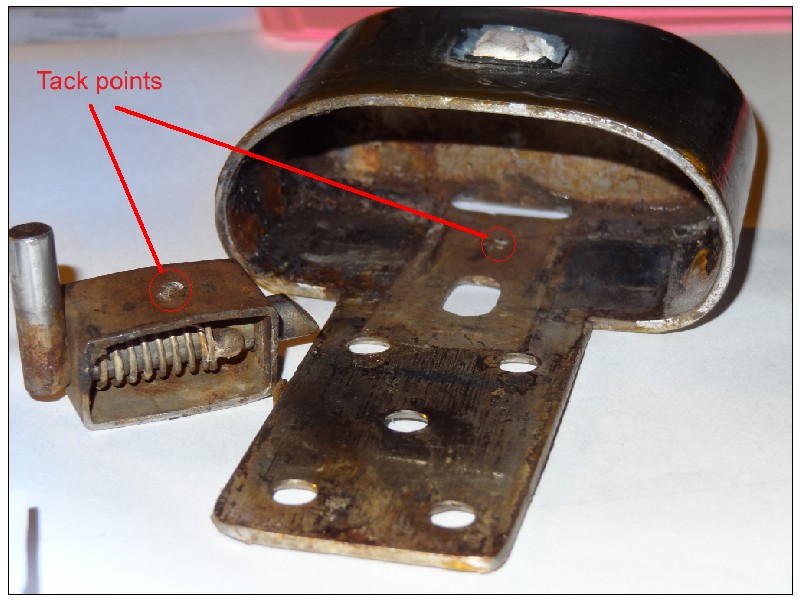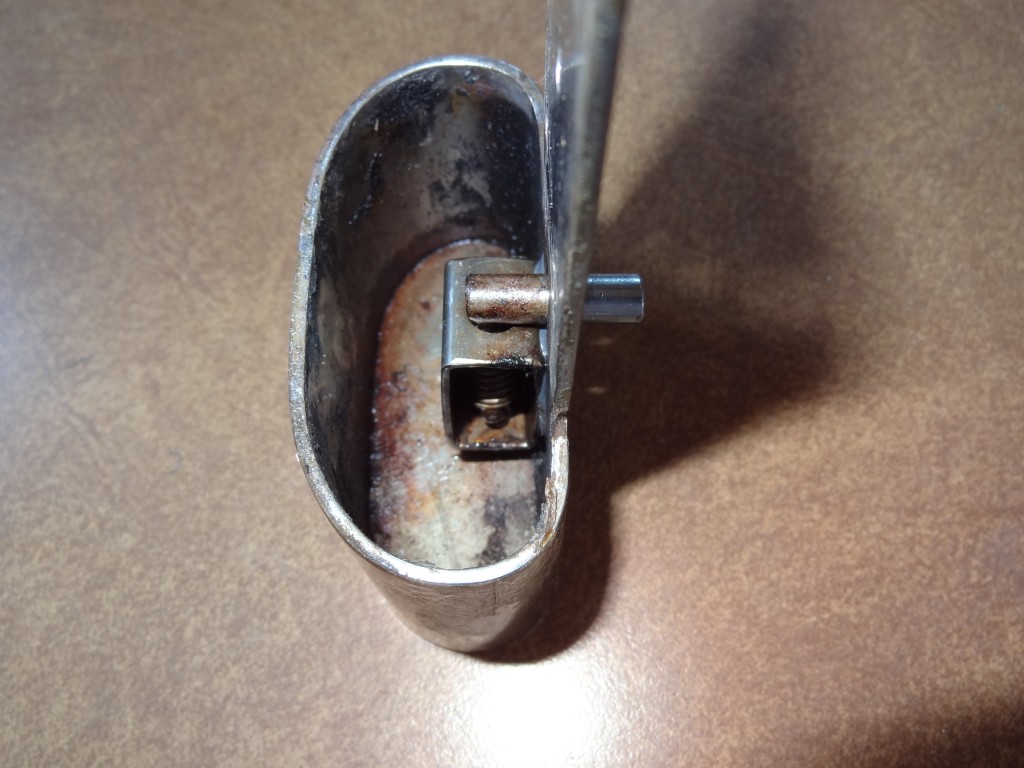After several days of checking lists, adding items, shopping for food, and multiple trips to Sanderling to load and store food, we got underway on our new Canadian adventure at 1205 on May 1st.
We stopped about two and a half hours later at Harbortown Marina to take on fuel, and about half an hour later had nearly full tanks and were off. Although the sky was overcast all day, the weather was decent with minimal wind.
About 1730 we anchored just north of the Titusville (Florida) marina and got settled in for our first night afloat. It seems like there are so many things to remember about how we have done things in the past, and other things that need to be done to get things in order for our long cruise. We stowed items that hadn’t already been put away, and relocated things that we felt were in the wrong place. The cats were fed and we prepared our first meal aboard, then in what would undoubtedly become our ritual we read for a short while and went to bed. Seems like all the fresh air results in an early bed time when we’re on Sanderling – much earlier than were we at home.
On Thursday we were underway about 0830 after feeding the cats, having our first cup of coffee, and checking the engine oil, other fluids, water pump belt, and generally making sure that everything was in order in the engine room.
We cruised much of the day on Thursday in windy conditions and rain. Tidal currents also slowed our progress in a few areas, and actually gave us a push in a few other locations. By the time we got to Daytona about 1530 it was too late in the day to get to our friends dock at Palm Coast (another 4 hours away). Consequently, we anchored at our “usual” spot in Daytona – just north of the Seabreeze Bridge. The weather forecast for the next few days was not good, with predicted wind from the E and ENE at gusts up to 40 and a lot of rain (flood warnings have been issued as I’m writing this), so we weren’t sure whether we’d get underway on Friday and attempt to get to St. Augustine, whether we’d try to get to our friend’s dock at Palm Coast, or whether we’d stay put in Daytona.
The anchorage where we’re located in Daytona is a good one for easterly winds, as we’re on the east side of the channel with the barrier island of Daytona Beach dampening the wind and the short fetch of water to our east (we’re about ¼ mile from the shore) lessening he effect of wind-driven waves.
After dinner we again checked with weather forecasts and radar images to try to get a feel for our options for Friday. We were hoping that we’d be able to get to St. Augustine or at the very least to our friend’s dock in Palm Coast.
There was quite a bit of rain and only a little wind on Thursday night. The rain facilitated the discovery of a couple of minor leaks at one port light (window) and at the deck on the starboard side, and a slight leak at the aft companionway hatch door which I thought we had eliminated several years ago. Looks like there’s a little more leak detective work in the offing as soon as we get some dry weather. Luckily for me, the aft companionway hatch leak is on Judy’s side of the bed! :-{)
Friday morning. The decision was made to stay at our anchorage in Daytona. The weather forecast for the area from Daytona to the Florida/Georgia border is for strong wind and a lot of rain by mid-morning and we felt that with our relatively large “sail” area (the part of the boat above the water) and wind from the east, cruising would be a uncomfortable, tiring and wet! Between Daytona and St. Augustine the ICW follows several different rivers with a few spots that are fully exposed to easterly winds and has only a few places to seek refuge. Although our friend’s dock is only 28 statute miles and about 4 hours cruising away, we anticipate that we will encounter the poor weather conditions before reaching their safe harbor. St. Augustine is out of the question, and once there the mooring fields are very exposed to easterly wind and the ICW at the St. Augustine inlet goes almost into the ocean and would be extremely rough and difficult to transit if the forecast conditions were accurate.
So, today (Friday) we stay put in St. Augustine. The weather to the north looks bad and the rain bands are hitting us frequently. So far we’ve had wind gusts approaching 20 MPH, but we anticipate more to come. I’ve removed the outer window covering from the forward saloon and side windows so we can see outside better and keep an eye on the conditions as they develop.
Now if only I could get our new Ubiquity WiFi antenna to pick up a local hot-spot!
More of the same is forecast for tomorrow.

